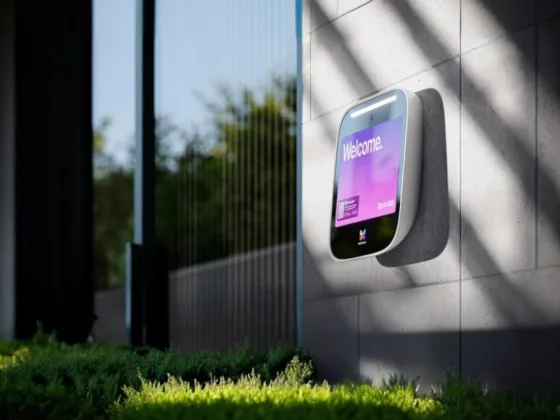In 2025, the educational landscape looks dramatically different than it did just a few years ago. The traditional classroom model, once resistant to digital change, has now evolved into a dynamic, technology-driven ecosystem. The explosion of artificial intelligence, immersive learning platforms, and data-driven personalization has redefined how students learn, how teachers instruct, and how institutions operate.
This transformation has been accelerated by necessity—remote learning during global crises, shifts in the job market, and rising student expectations. But it’s sustained by innovation. Today, EdTech is not just a supplement to learning; it is the foundation of modern education.
Let’s explore the most important technologies, platforms, and ideas driving this transformation in 2025.
1. AI-Powered Personalized Learning
At the heart of the EdTech revolution is artificial intelligence. In 2025, AI tutors and learning engines don’t just recommend content—they orchestrate entire educational journeys tailored to each learner’s strengths, weaknesses, goals, and pace.
Key features of AI-powered learning include:
- Dynamic curriculum adaptation: Lessons evolve based on real-time performance and engagement levels.
- Individual learning paths: Students receive uniquely sequenced material rather than a one-size-fits-all syllabus.
- Instant feedback: AI provides immediate responses to questions, guiding students toward mastery.
These tools are available on platforms such as Khan Academy AI, Duolingo Max, and numerous institution-specific systems built using open-source AI models. As a result, students worldwide are receiving personalized instruction once only available to the privileged few.
Related reading: New Artificial Intelligence Tools to Replace Human
2. Immersive and Experiential Learning with AR/VR
Augmented Reality (AR) and Virtual Reality (VR) are no longer niche experiments—they are now core components of digital classrooms. From history field trips in ancient Rome to VR chemistry labs, these tools bring abstract concepts to life.
Notable applications in 2025 include:
- MetaClassrooms: VR-powered learning environments where students and teachers collaborate in 3D spaces.
- AR overlays in physical classrooms: Visualize complex math problems or 3D anatomy using tablets and AR glasses.
- Simulated internships: Virtual job simulations help learners prepare for real-world challenges before entering the workforce.
These experiences increase engagement, retention, and accessibility—especially for students who may not have access to advanced labs, travel, or real-world training environments.
Related reading: 10 Benefits of Using Ai for Home Design
3. EdTech Meets Gamification
Gamification continues to rise in popularity, not just as a gimmick but as a proven strategy to increase motivation and outcomes. In 2025, leading EdTech platforms include points, badges, storylines, and friendly competition—woven naturally into the learning flow.
Examples include:
- Language learning quests with branching narratives and adaptive difficulty.
- Mathematics missions where solving problems unlocks new game worlds.
- Social-learning platforms where peers earn team rewards through collaboration.
By making learning feel like a game—without compromising rigor—EdTech companies are improving persistence and making even traditionally challenging subjects more approachable.
Related reading: How Property Values Are Increasing with Ai and Ml Technologies
4. AI Teaching Assistants and Educator Support
It’s not just students benefiting from AI. Teachers now rely on AI co-pilots that help with:
- Lesson planning based on individual class performance.
- Automated grading and personalized feedback.
- Predictive analytics to identify struggling students before they fall behind.
These tools free educators to spend more time on the human aspects of teaching—mentorship, creativity, and support—while AI handles the repetitive administrative tasks.
Moreover, teacher training programs increasingly include modules on AI literacy, ensuring that the next generation of educators are as tech-savvy as their students.
5. Hybrid and Global Classrooms
Online learning has gone from emergency fallback to a strategic option. In 2025, many schools operate in hybrid modes, blending physical and virtual attendance seamlessly. With real-time language translation and synchronized tools, geography is no longer a limitation.
Highlights include:
- Global classrooms: Students from multiple countries learning together in shared digital spaces.
- Asynchronous cohorts: Learners progress at their own pace while still collaborating through discussion forums, video replies, and peer grading.
- Microcredentials and modular courses: Learners stack certifications across platforms (Coursera, edX, FutureLearn) to build their own degrees.
This flexibility allows for more inclusive education models, accommodating different time zones, lifestyles, and learning speeds.
6. Learning Analytics and Educational Data Science
With AI analyzing millions of student interactions, EdTech platforms in 2025 offer deep learning analytics. These insights are transforming how students self-monitor and how institutions make decisions.
Advanced dashboards offer:
- Real-time tracking of student engagement and comprehension.
- Predictive insights about drop-out risks, strengths, and future performance.
- Institutional analytics to improve curriculum design, resource allocation, and student retention.
This data-driven approach allows for faster intervention, better planning, and more measurable outcomes—shaping education into a responsive, evidence-based practice.
7. Content Integrity and the Rise of AI Content Detectors
As generative AI becomes ubiquitous, especially in essay writing and academic projects, institutions face a growing challenge: distinguishing between original student work and AI-generated content.
To address this, many universities and platforms have adopted technologies like the AI content detector, a tool designed to evaluate whether submitted material was likely generated by artificial intelligence. These tools analyze linguistic patterns, statistical features, and structural cues.
While their use raises debates around privacy and academic freedom, they also serve to:
- Encourage students to understand and reflect rather than merely produce content.
- Support academic honesty in an era of easily accessible AI tools.
- Help teachers identify when intervention or education about plagiarism is needed.
Combined with AI-writing ethics curricula, these detectors are now part of the broader movement to maintain integrity in digital education.
8. Accessibility and Inclusive Design in EdTech
EdTech in 2025 prioritizes accessibility—not as an afterthought, but as a fundamental design principle. Technologies are now built to serve students with visual, auditory, cognitive, and mobility impairments more effectively than ever.
Examples include:
- Real-time AI transcription and sign-language avatars for deaf learners.
- Text-to-speech with emotional inflection for the blind or dyslexic.
- Simplified interfaces and cognitive support features for neurodiverse students.
This ensures that the promise of digital learning reaches all students, regardless of ability.
9. Ethical EdTech: Privacy, Consent, and Equity
With all the data EdTech collects, ethical concerns are growing. In 2025, leading platforms must adhere to strict standards regarding:
- Student data privacy and consent.
- Algorithmic fairness—ensuring no demographic is disadvantaged by AI-driven decisions.
- Content transparency—especially in adaptive systems that decide what material is shown to whom.
Governments and institutions are also creating Digital Learning Charters, requiring platforms to disclose how student data is used and to involve students in shaping their learning environment.
The goal is clear: innovation without exploitation.
Final Thoughts
In 2025, EdTech is not just changing education—it is rewriting its DNA. With personalized AI tutors, immersive simulations, global connectivity, and intelligent content tools, students are more empowered, engaged, and equipped than ever before.
But this transformation comes with responsibility. Tools like the AI content detector help protect academic integrity, while educators, developers, and regulators must work together to ensure EdTech serves all learners fairly.
The classroom of the future isn’t a place—it’s a network of minds, machines, and possibilities. And the future is already here.







